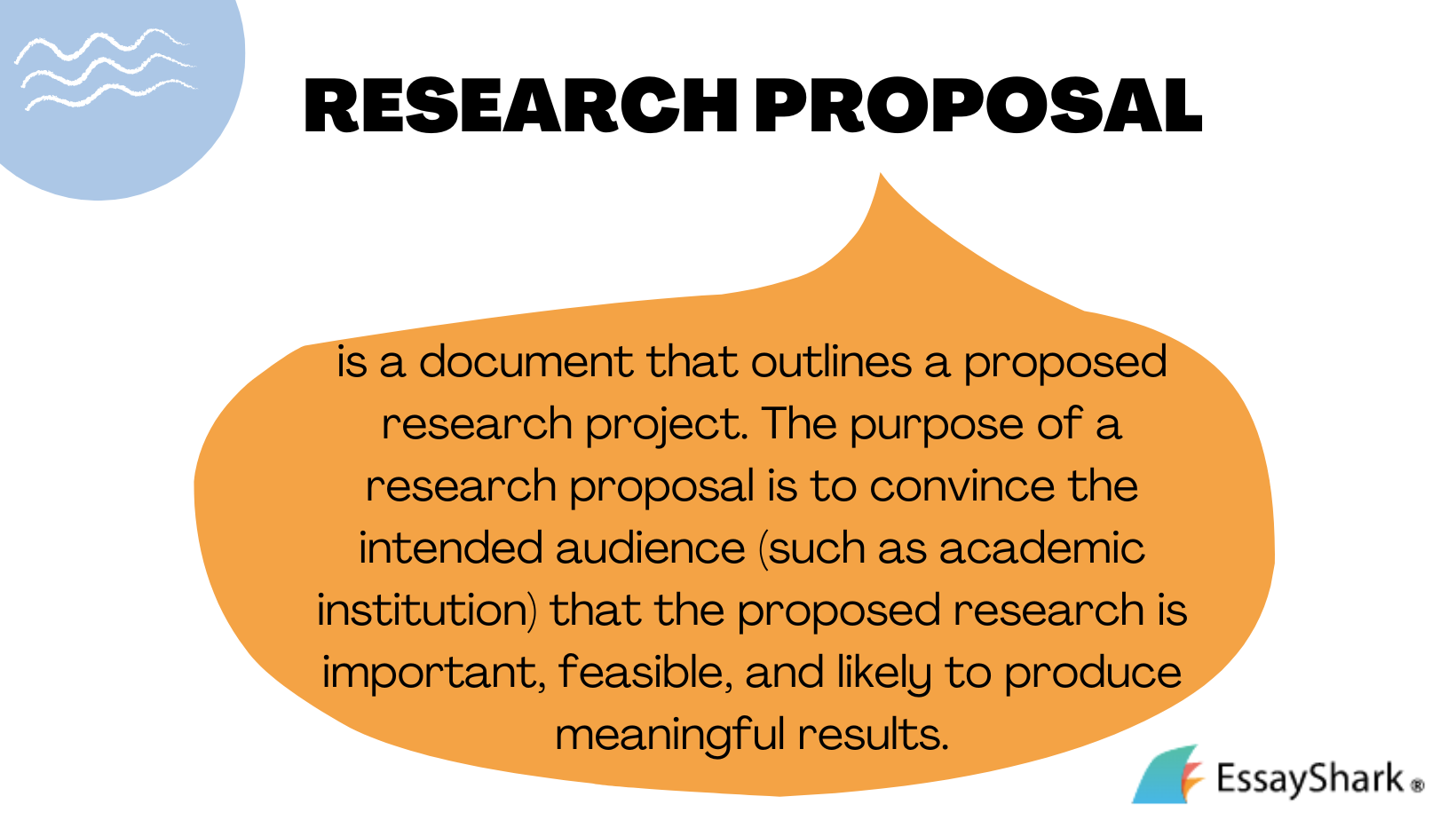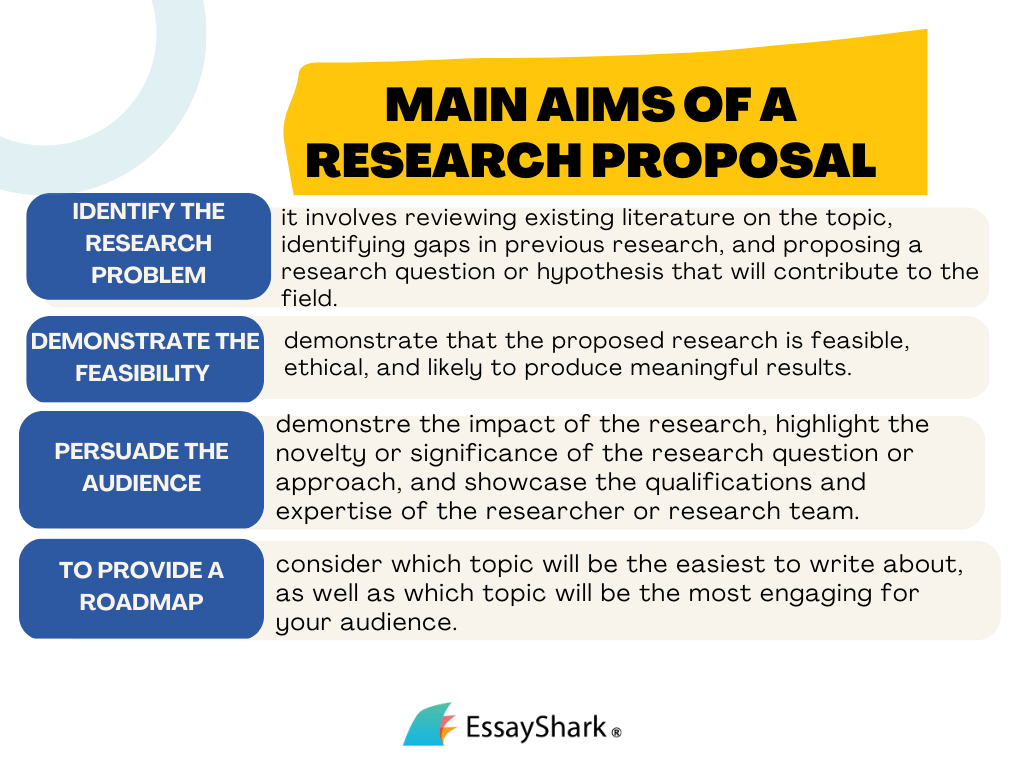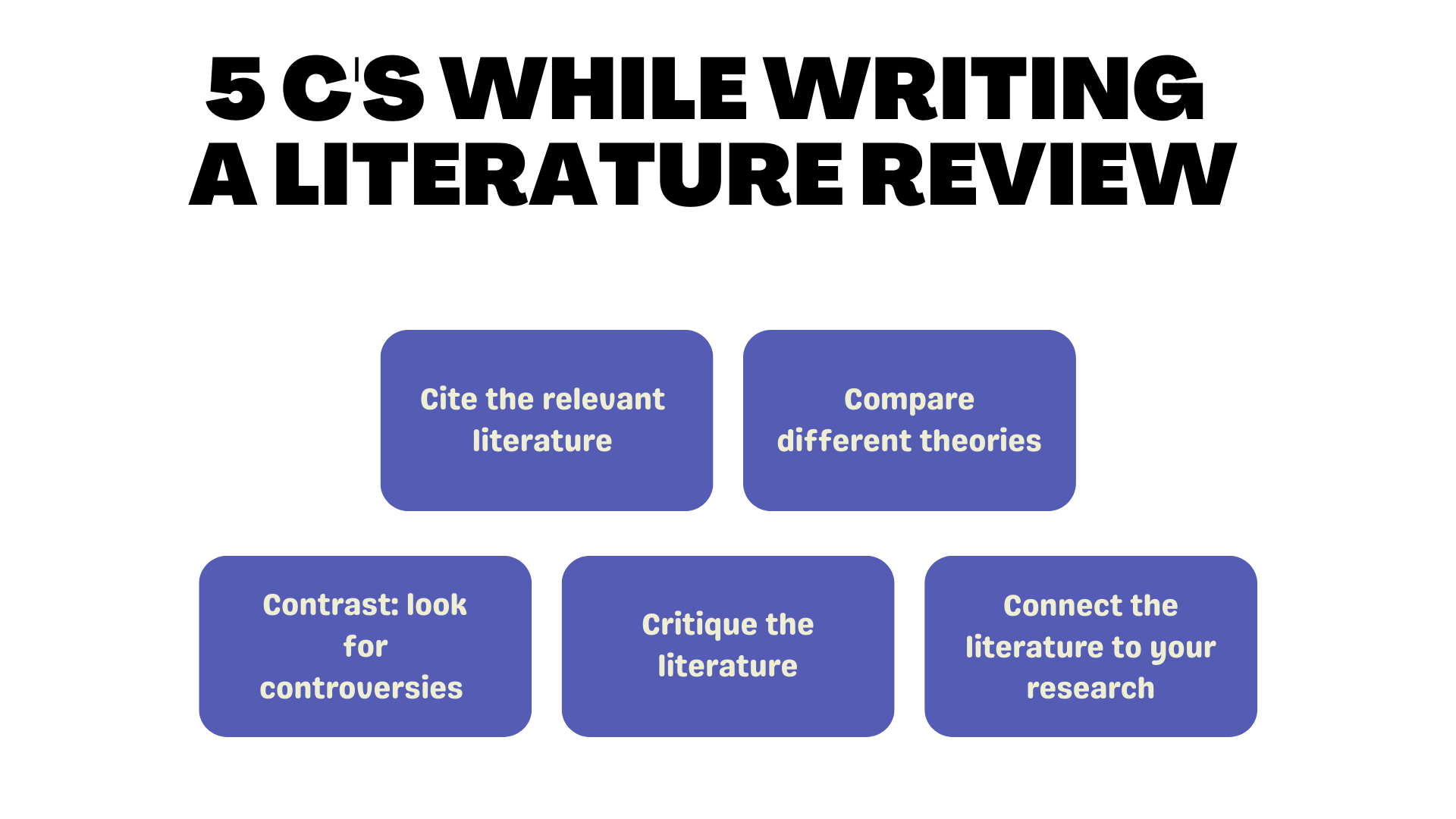Whether you are a student facing a research proposal task for the first time or have already worked on a similar task but want to refresh some important points on how to write a research proposal, this article is for you. Our expert academic writers have completed a step-by-step guide that can help you learn all the ins and outs of how to write an essay proposal and guide you throughout the entire process. Moreover, if you have no idea what issue to discuss within a certain field, you can enjoy our college essay title generator, or if you are struggling with formulating relevant ideas that could be presented in your college paper, you can consult our writing ideas generator for free.
What Is a Research Proposal?
If you are facing this assignment for the first time, you are more likely to ask Google, “What is research proposal?” Let’s discuss this question briefly. A research proposal is a detailed plan that outlines what you are going to study within your research, explaining why it’s important to research the topic you have chosen and how you intend to conduct it. The main purpose of research proposal is to provide a roadmap for your project and help convince your audience of the value and feasibility of the entire study.
There are several types of research proposal, and each serves a distinct purpose. Proposals can be solicited, in which case they respond to specific calls from organizations, or unsolicited, meaning they are submitted voluntarily to seek support. Well, during their academic journey, a student is more likely to be assigned an academic proposal that outlines research for theses, dissertations, or academic projects or business proposals for business classes, which focus on studies that align with business goals, such as market analysis.
Typically, research proposals follow a specific structure. The introduction explains the key research issue as well as highlighting its importance and introducing the research question or hypothesis. The literature review summarizes the existing studies on the topic, shows how your research fits in, and fills any gaps. The methodology describes the methods you are going to use to collect and analyze data. This particular section is required to ensure that your plan is clear and feasible. The expected outcomes outline the potential results and their significance. Finally, the references list the sources you’ve cited and show that your research is grounded in credible work.
It is important to mention that a research proposal is not a final study. Instead, it is a structured presentation of your ideas meant to win the approval needed to proceed. Each section guides your reader through your plan and demonstrates your preparations for the study discussion.

The Main Aims of a Research Proposal
Anytime you have to complete a certain task, you have to understand the main goal of doing so. The same goes with research proposals; to craft a masterpiece, you have to understand its main goals so that you understand how to write a research proposal that will provide your readers with all the essential information they need. Take a look at the table below and learn the main aims you will have to discover in your writing.

Structure of a Proposal for a Research Paper
As we have already mentioned, a research proposal has to follow a specific structure so that it can be considered credible and professional. Here, we will take a brief look at the structure of a proposal and explain the main goals of each section.
- Title page. This page will include the title of your research proposal, your name, and your institutional details. Usually, professors provide students with certain formatting requirements for this section of the proposal, so if you have any, make sure your title page meets them all.
- Abstract. This is a brief summary of your research, which will highlight the main focus of the exploration, objectives, and methods used to complete the entire investigation of the issue.
- Introduction. Here, you have to explain the research topic, provide background information, and state the research question or hypothesis. The hypothesis is the key point that you have to provide so that your reader understands what you are trying to convey. Thus, it is important to pay close attention to this section; don’t make it too broad, and make sure it presents the main issues within the chosen topic.
- Literature review. At this stage, you will have to review existing studies and identify which gaps your research is going to fill. Many students don’t understand the difference between a literature review and a literature list. The literature review discusses the sources you want to analyze, but the literature list just shows a catalog of the sources you have consulted.
- Research objectives. Just as it is important to show your intentions for the research, it is also important to tell your audience what your research seeks to achieve.
- Methodology. In this section, you will detail the methods you’ll use to collect and analyze data as well as to ensure the feasibility and reliability of your research.
- Expected outcomes. This section describes the results of your research and their potential implications.
- Timeline. Actually, this is an optional section, and your professor may not require it, but if it is mentioned in the requirements, you have to be aware of its main goals. The timeline outlines the steps and schedule you’ve utilized for completing your research.
- References. This is the final section of your research proposal; it lists all the sources cited and has to be formatted according to the style required by your professor.
How to Write a Research Proposal Outline
A research proposal outline can help you organize your ideas and ensure that you cover all the essential issues concerning the central question. First, you can enlist the main sections discussed in the previous paragraph and jot down the key points you’ll include under each section in the list. For example, in the introduction, outline the topic, background information, and research question. In the methodology, schedule your data collection and analysis methods. It is essential to keep your outline clear and concise; you can use bullet points for easy navigation. This structure will guide you as you write, make the process more manageable, and help your proposal flow logically.
We have mentioned the fact that the outline is your roadmap for the research proposal to make sure you have covered all the essential points. Moreover, the outline can help you make the writing process comfortable and divide it into smaller steps that you can easily manage. Here are some tips that can help you overcome the task.
- Understand the requirements. Review your assignment guidelines before completing the outline to ensure that you include all the required sections and consider all the formatting demands. Well, college formatting requirements are often tricky for newbies, and even a requirement as simple as calling for a certain number of pages can be challenging. With our words to pages tool, you can easily see how many pages your essay will take in this or that format.
- Start with a title. Pay enough attention to create a clear, concise working title to focus your proposal.
- Break it down. Use the outline to break the writing process into manageable parts.
- Focus on clarity. Use simple language and logical headings to organize the ideas in the outline.
- Highlight key details. We highly recommend you include specific research questions, objectives, and methods to keep your outline on track.
- Use notes. Write brief phrases for flexibility and easy navigation when writing your research proposal.
Steps for Writing a Research Proposal
Now, we will take a look at how to prepare research proposal that will not only meet academic standards but also present its key ideas clearly to the audience. We have already discussed that at the very first stage, you have to understand the task, choose a topic, complete some background research, and formulate a hypothesis. Then, you move to an outline, and only after it is completed do you start the writing process itself. Below, we will provide a step-by-step guide on how to complete a comprehensive research proposal.
1. Write the title page
The title page has to provide all the essential information about you and your research. So, here is the information you have to add.
- Research title. A concise, descriptive, and engaging title reflecting your study’s focus.
- Your name. Include your full name as the author.
- Institution. Write the name of your college or university.
- Date. Provide the date of submission.
- Course information (if required). Mention the course name, instructor, or department.
- Neat formatting. Center-align the text (unless guidelines specify otherwise) and use professional fonts and spacing.
2. Draft an abstract
We highly recommend not paying too much attention to the format or other points at this particular stage and merely focusing on completing a draft first. You will polish it after the main content is complete to ensure that all the information presented in the body is also included in the abstract to summarize the proposal accurately.
- Write the purpose. Briefly state the research problem or question and the significance of the study.
- Summarize the methods. Also, briefly outline the key methods you’ll use for data collection and the analysis of the issue.
- Highlight expected outcomes. Mention the anticipated results and their potential impact.
- Keep it laconic. Limit your abstract to 150-250 words, depending on the assignment’s requirements.
- Use appropriate language. Use clear and straightforward language to ensure accessibility to all readers.
3. Draft the introduction
The introductory part is one of the most important for your readers or listeners because this tells them what is going to be discussed in your paper. Thus, it is essential to mull over the way you will present the issue as well as how to keep your readers interested and motivated to learn more.
- Start with a hook. An engaging statement should go first; provide statistics or questions to grab the reader’s attention and introduce the relevance of the chosen issue for research.
- Give some background information. Explain the broader context of your research. Include key details that can help your reader understand the topic and its significance.
- Define the central issue. Clearly state the issue or gap in knowledge that your research aims to address.
- State the hypothesis. Present your research question or hypothesis clearly and concisely. This will serve as the foundation of your study.
- Explain the purpose. Describe what your research seeks to achieve and why it is important to your field or to solving a specific problem.
- Highlight the significance. Show how your research contributes to the field, fills a gap in existing knowledge, or offers practical implications.
- Outline the structure. Briefly mention what the rest of the proposal will cover, providing a roadmap for the reader.
4. Write the literature review
Now, it is just the time to show that you have conducted profound research and analyzed the most appropriate sources to study the issue and come up with relevant conclusions. Depending on the research you are going to present, the number of sources may vary; thus, here are some tips that can help you not get lost in all the literature and get the most out of your studies.
- Gather relevant sources and organize them by theme. First, take a look at scholarly articles, books, and credible publications related to your topic and choose the ones you want to consult to complete your research. Group all the chosen sources by their key themes, as it is important to maintain a logical flow and write in a clear, organized manner, connecting each idea to the next.
- Summarize key findings. Highlight the main ideas presented in each certain source so that you can easily navigate them when working on the paper to clearly explain areas where the current research is lacking and how your study addresses them.
- Use proper citations. Since, in this section, you have to present the literature you are going to consult and communicate the key ideas they offer, make sure all the points have proper citations.
Conclude with the relevance. Finally, you will have to link the review to your research question and justify the need for your study. The main task of this particular section is to convince the reader that your research deserves their attention and that you can provide answers to their questions.

5. Develop the methodology section
The target goal of your research is to present a new perspective on an issue and prove that it fills the gaps existing in the question today. Thus, you have to present the way you are going to provide evidence and do the research itself. The methodology section is about just that.
- Review your objectives. Start by reviewing the objectives of your research. Make sure your methodology aligns with your research question or hypothesis.
- Choose the design for the research. Decide whether your research will be qualitative, quantitative, or mixed-methods. Clearly justify your choice based on the research objectives, as well as explaining the approach you’ll use (such as experimentation, surveys, case studies, ethnography, or another method).
- Outline your data collection methods and explain your data analysis techniques. Specify how you will collect data. Will you use surveys, interviews, observations, experiments, or secondary data analysis? Describe the process in detail. Detail how you will analyze the collected data, including any statistical tests, software tools, or qualitative analysis methods (e.g., coding, thematic analysis) used. Demonstrate that your methods are practical and feasible within the time, budget, and resources available.
- Identify the participants or sample. If your research involves people, explain the target population, sample size, and sampling method (random, purposive, convenience-based, etc.).
- Discuss the ethical considerations. Address any ethical issues related to your research, such as consent, confidentiality, and participant rights.
6. Outline the expected outcomes
Of course, you will have to tell your audience what exactly you want to get in the end. Thus, in this section, you have to pay closer attention to what you’re promising your readers. Remember that this section has to be a concluding part of the whole research project, and you have to make sure you do not cover any extra questions that were not discussed in your research. Here are some tips that can help you keep on track.
- Restate the objectives. Revise your research question to ensure that the outcomes do not contradict your goals.
- Identify potential results. Based on your research, predict the kinds of results you expect to find.
- Discuss the significance. Of course, it is very important to convince your audience that the expected outcomes will contribute to the field of study and provide new insights into the topic. You can even discuss how the results might be applied in real-world settings or inform future research, policy, or practice.
- Name the limitations. Mention any limitations that could affect the expected outcomes of your study.
- Stay realistic. Your predictions should be based on the selected research methods and existing literature; do not promise a star from the sky.
7. Add a timeline (if required)
If your professor has requested a timeline in your research proposal, it is needed to evaluate the feasibility, organization, and time management of your project. To create an effective timeline, list all the major tasks, assign realistic deadlines, prioritize dependencies, and include buffer time. If this is an essential part of your work, you will have to present it visually; in this case, you can use tables or charts to present all the data clearly.
8. List references
If you have chosen the sources at the very first step, you are more likely to have a list of references at this stage, but you have to make sure it corresponds with the requirements your professor has set.
- Certain citation formatting may be required. Determine the citation style you need to use (APA, MLA, Chicago, etc.) and make sure that your references are written according to the actual standards.
- Organize the references alphabetically. Arrange your references in alphabetical order by the author’s last name (for most citation styles).
In the end, your task is to polish your paper and proofread it thoroughly. When polishing your draft, you can use a large number of tools available today, like Grammarly or our free AI checker essay (which can help you make sure your piece is 100% original).
Widespread Pitfalls to Avoid in Writing a Research Proposal
As with any college writing task, there are some common issues that most students face because they do not have enough experience in this particular type of writing. Well, let’s take a look at some of the most common problems and discuss how to prevent or overcome them easily. Here, you will see tips from professional writers with years of experience in research proposal writing and who know how to overcome even the trickiest traps.
#1. Defining a clear research question
It is essential to craft a focused research question, but it can be really difficult. The most challenging thing for students is the struggle to narrow their topic to something researchable.
- First, explore your broad topics of interest and narrow down your focus to the gaps that are, so far, underexplored. The “What, Why, How” approach can help you refine your question and ensure that it’s specific enough.
#2. Understanding the research methodology
Often, students do not fully understand how to design the study or choose appropriate data collection techniques.
- Read about different research methodologies and choose the one that best suits your research question. You can also consult your professor to choose the best option for your objectives.
#3. Conducting a comprehensive literature review
To complete a strong research proposal, you will have to find relevant, credible sources and analyze them critically. Unfortunately, you may struggle with synthesizing information.
- Organize your literature review by theme, not by individual sources. Also, take notes on the key findings and ensure that you’re synthesizing information to identify research gaps.
#4. Balancing depth and brevity
This is a really challenging task because over-explaining certain aspects is as bad as not including enough necessary information.
- Focus on the most critical aspects of your research proposal and stick to the core points to avoid giving unnecessary details.
#5. Time management
Make sure you know how to manage your time in order to come up with the needed proposal on time.
- Break down the proposal into smaller tasks with deadlines. You can use various digital tools to stay organized and track your progress.
#6. Meeting formatting and citation standards
Following formatting guidelines can be tedious, but if you know where to go for help, this won’t be an issue for you anymore.
- There are so many citation tools you can use today; consider Zotero or EndNote to help you manage your references.
#7. Writing clearly and cohesively
Students may find it challenging to write clearly and organize their ideas logically. Crafting an engaging yet academic tone can also be a struggle.
- Create an outline before you start writing because this can serve as a roadmap for the entire writing process. Also, we highly recommend writing in stages; first, focus on drafting, then revise for clarity. You can also ask one of your peers to help you with proofreading; in this case, the person who reads your proposal after it is complete can share their thoughts with you.
Research Proposal Example
If you are wondering, “How does a research proposal look like?”, this example is just for you. Look through this example proposal and learn from it in practice.
Analysis of Milk Composition
Abstract
In a biology research proposal on the analysis of milk composition, an analysis of the composition of milk from the manufacturers selected for the experiment will be carried out in order to identify milk that most closely meets nutritional standards. The proposal contains interesting information about the most important product for humans: milk.
In the process of research work on biology related to the analysis of milk composition, the author summarizes the theoretical material on the composition and benefits of milk, and also reveals the most natural milk among manufacturers. This paper analyzes the attitude of consumers to the firms that produce milk.
In the framework of research and experiment, the author reviewed the composition of milk indicated on the manufacturers’ packaging and compiled a table that highlights the main characteristics of each sample. The research proposal on the composition of milk is relevant at the present time of production of this product.
Introduction
The benefits of milk have been known for a long time, and since ancient times it has been included in the diet of both children and adults. It is a valuable product for the body and is even used as a preventive and medicinal drug. Milk is considered a light product, because the lowest concentration of gastric juice is sufficient to digest it.
The benefits of milk are due to the content of a fairly large amount of vitamins of group B, A, and C. All parents call on their children to drink milk in order to increase their immunity and improve their mood, thanks to which familiarity with this product is high. But today, due to various technologies for preserving milk, the usefulness of this product is questioned, and a number of researchers believe that an adult does not have the proper enzymes that digest milk, and therefore its useful properties are disputed.
Literature review
The fact that milk is good for the nervous system was announced in 2017 by Japanese scientists from Tohoku University. According to research involving more than a thousand people, milk (especially low-fat milk) and yogurt significantly reduce the risk of developing depression and increase emotional stability. As the head of the study, Dr. Ryoichi Nagatomi established that, to strengthen the nervous system, it is enough to drink milk or yogurt about four times a week. In further studies, scientists hope to determine what kind of biological mechanism underlies this phenomenon.
Researchers from the University of Maine (USA) have proven that drinking milk has a positive effect on brain function. Moreover, to improve memory and concentration one can and should not only drink milk, but also include dairy products such as cheese, yogurt, and even ice cream in the diet. American scientists conducted a study on a group of people of different ages, who first carefully described their diet, and then performed a series of tests. The results showed that those who consume milk at least five to six times a week coped with the tests best of all, especially with the tests that check memory. But people who refuse milk showed results five times worse. Scientists attribute this to the beneficial substances found in milk that affect the development of “gray cells” (in particular, magnesium) as well as the beneficial effects of milk on the circulatory system that nourish the brain.
More research proposal samples
Our experts are constantly working on new samples you can freely find on our website so that any student in need can get professional assistance with this kind of writing. For example, if you are assigned a research proposal on the relation of alchemy to physics or even any other related topic, you can consult our example proposal on “What Is the Relation of Alchemy to Physics?”
For those college learners who have to complete a research proposal on innovative approaches in psychology, you can enjoy our sample on “What Are Innovative Approaches to Contacting Problematic Children?”
Research proposal writing assistance from pro writers
No matter what college assignment you have, you can always come to our professional staff and ask us to “Write my research paper.” Of course, we understand that most students are on a budget, and we’ve created a large pool of helpful tools that can assist college learners with different writing tasks.








